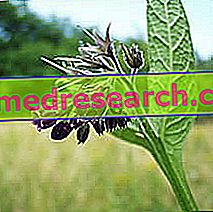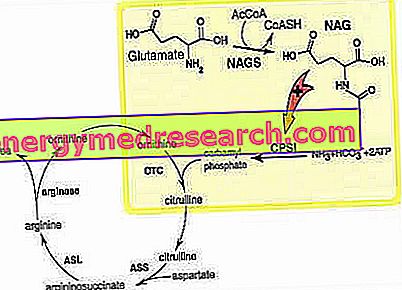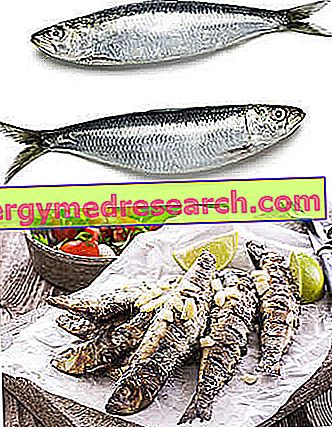
Scientific name
Symphytum officinaleFamily
BorraginaceaeOrigin
Comfrey is a plant found mainly in northern Italy.Synonyms
Consolida Maggiore
Used Parts
Drug consisting of the root
Chemical constituents
- Tannins;
- mucilage;
- Triterpene saponins;
- allantoin;
- Pyrrolizidine alkaloids (synphytin);
- Salicylic acid;
- Protein.
Consolidate in Herbalist: Property of Consolida
The consolida root was used until a few years ago, even in our country, as a folk remedy against gastritis and gastric ulcer, in relation to the allantoin content.
However, since many studies have shown the presence of toxic pyrrolizidine alkaloids, the use of comfrey should be abandoned, or possibly reserved, only on medical prescription, for external use as an anti-inflammatory, for short periods and on limited surfaces.
The revulsive properties of the comfrey mean that, applied to the chest by cataplasms, it helps the elimination of the excess phlegm.
Biological activity
Comfrey is a plant to which various properties are attributed, including anti-inflammatory, emollient, antiulcerogenic, vulnerary, astringent, anti-diarrheal and healing.
The anti-inflammatory action, the antiulcerogenic action and the healing one are mainly attributed to the allantoin contained in the plant.
The emollient activity is instead attributed to the mucilage; while the astringent and antidiarrheal properties are conferred to the comfrey by its tannin content.
As mentioned, in the past the comfrey was used internally as a remedy against gastritis, gastric ulcers and duodenal ulcers. However, the internal use of the plant is highly discouraged due to the pyrrolizidine alkaloids it contains. In fact, these molecules have hepatotoxic, carcinogenic, teratogenic and mutagenic properties.
Consolidates against traumas
By virtue of its anti-inflammatory and healing properties, the use of comfrey has been officially approved for the treatment of trauma, bruises, sprains and muscle sprains.
To treat the aforementioned disorders, the plant must be used externally.
Generally, the comfrey is used in the form of creams or ointments, which must be applied several times a day directly on the area affected by the trauma, by the bruise, by the tear or by the distortion.
Consolidates in folk medicine and homeopathy
In folk medicine, comfrey root was used as a remedy for the treatment of rheumatism and pleurisy, as well as being used as an antidiarrheal agent.
Other non-approved uses of the consolida provide for its use in solutions for rinses and gargles, to be used in the case of bleeding gums, mouth ulcers, stomatitis, pharyngitis and sore throat.
Comfrey is also widely used in homeopathic medicine, where it can be found in the form of granules, drops, capsules, mother tincture and ointment.
In this context, the plant is used in case of trauma and tendinitis and to promote and stimulate the healing of bone fractures.
The amount of homeopathic remedy to be taken can vary from one individual to another, also depending on the type of disorder that needs to be treated and according to the type of preparation and homeopathic dilution that is intended to be used.
Contraindications
Avoid using consolida and its preparations in case of ascertained hypersensitivity to one or more components.
Furthermore, the use of comfrey based preparations is also contraindicated in pregnancy and during lactation.
Warnings
Internal use of comfrey is generally contraindicated due to the toxicity conferred by the pyrrolizidine alkaloids contained in it.
As regards external use, however, it is recommended to use only products containing private extracts of the aforementioned alkaloids and to use them only on intact skin areas.
Pharmacological Interactions
- no interactions of comfrey with other drugs are known.



